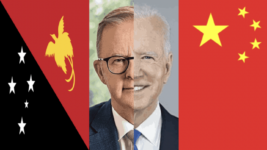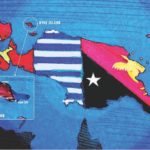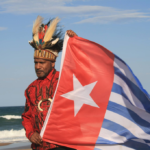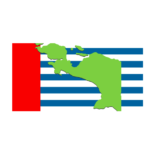AUKUS Powers Are Militarising Papua New Guinea in Preparation for War with China

Journalist John Pilger’s 2017 documentary The Coming War With China warned that the US had established a “perfect noose” of 400-odd military bases surrounding China, while former Australian PM Paul Keating recently asserted that the AUKUS deal makes us part of this “containment policy”.
Indeed, the AUKUS, local US force posture initiatives and increasing interoperability between US and Australian forces have heightened the premise that this relationship has relegated our nation to the status of a vassal state: independent domestically but ever-compliant with US foreign policy.
However, the increasing deployment of US troops and arsenal to Australian shores doesn’t complete Washington’s agenda, as there is an island nation to the north of this one, that being Papua New Guinea, which the White House is interested in incorporating into its ring around Beijing’s neck.
This process involves AUKUS power Australia acting in a similar manner to that of the US in regard to us, when it comes to accessing and periodically obtaining control over certain Australian military facilities, as Canberra is taking a similar path at PNG’s Lombrum Naval Base in Manus province.
And while most Australians are aware that Joe Biden is coming to our country next week as part of the China-focused Quad alliance leaders meeting, many are unaware that the US president will also be paying a visit to our northern neighbour on his way, seeking to establish defence agreements.
Of strategic importance
In USA, Australia Militarizing PNG, a paper released last month, journalist and ex-PNG foreign affairs officer Dominic Navue Sengi describes the AUKUS pact as “a case of vassals”, specifically our country and the United Kingdom, “lining up together under US leadership”.
Sengi outlines that he’d predicted in 2006 that PNG would be of increasing importance to the western alliance, when it began targeting China in the South China Sea, as PNG sits squarely in “an island chain”, commencing in Tokyo to Saipan and onto Guam: “the US’ so-called ‘big spearhead’ looking into China”.
The PNG journalist is also clear about the reason why the US-led AUKUS has China in its sights, which is not, as Australian authorities and media have asserted, due to Beijing posing any military threat to Washington or Canberra, but rather it’s that it’s likely soon to surpass US hegemonic economic power.
That the “USA and Australia have inserted militarily in PNG territorial jurisdiction” is obvious to many, writes Sengi, adding that the main development that sees AUKUS powers threatening PNG’s sovereignty and independence is via their involvement in the Lombrum Naval Base on Manus Island.
Yet, what Sengi describes as the AUKUS powers making forays into his nation’s jurisdiction involves a scenario whereby it’s Australia that’s asserting control over the PNG coastal military base, in a not dissimilar way to how the US has the ability to assert ultimate command over certain facilities here.
Increasing interoperability with PNG
The Obama administration shifted US military focus to the Indo Pacific region with its 2011 Pivot to Asia. And the following year saw the Gillard government agree to increasing US military presence in the north of Australia, which was officially established under the 2014 Force Posture Agreement.
This arrangement permits US forces to access dozens of local bases and take control of them during any upgrades it decides to do. And it further provides for the presence of 2,500 US marines in Australia, as well as increasing interoperability between air forces, and with the AUKUS, it also extends to navies.
In a similar manner, Australia now has access to PNG’s naval base on Manus Island. This was established via the 2019 Memorandum of Understanding for the Joint Initiative at Lombrum Naval Base, which aims to redevelop it and increase interoperability between both nations’ defence forces.
“The joint initiative will enhance PNG Defence Force capability to protect its borders and maritime resources through a broad program of mentoring, tailored training, infrastructure development and shared facilities at the PNG defence force base,” said then Australian defence minister Christopher Pyne.
Sengi suggests that secretive MoU implementation arrangements permit aspects of the multimillion-dollar redevelopment to remain hidden even to PNG cabinet ministers, with the obvious question triggered being whether Australia and the US are planning Lombrum to be an AUKUS submarine base.
A key feature of AUKUS is that Australia initially allows the US and UK to establish a joint rotational nuclear-powered submarine force here by 2027, which is prior to our nation then acquiring its own eight nuclear-powered attack-class subs, with all of this being in aid of mounting tensions with China.
Of increasing importance
Australian PM Anthony Albanese was over in PNG for a two-day visit in mid-January with the primary aim of releasing a Joint Statement of Commitment to Negotiate a Bilateral Security Treaty with his PNG counterpart James Marape: an agreement that involves increasing interoperability on security.
And ahead of the 24 May Sydney Quad Leaders’ Summit, US president Biden will be dropping in on PNG to sign a defence agreement with that nation, which was finalised a fortnight ago, and he’ll also be meeting with 18 leaders of Pacific Island nations, with regional security likely to be the focus.
The second item on Biden’s PNG agenda is the signing of a Ship Rider Agreement, which will permit the US Coast Guard to patrol PNG waters, whilst also allowing the island nation’s military personnel to join onboard, with the aim of initiating them into the latest technologies.
“A US-China conflict could play out across the whole Pacific, including Melanesia and the Polynesian islands, not just in the Taiwan Strait and South China Sea, which puts PNG and the Solomons firmly in the spotlight,” UNSW Professor David Kilcullen told Reuters last week.
But according to Sengi, the Lombrum base MoU, the Ship Rider Agreement and the pending bilateral security arrangements with both Australia and the United States, all point to a situation whereby his nation has unwittingly been drawn into the noose of US bases tightening around China.
“The issues of command and control, of non-discriminate interoperability and training of naval officers, the parking of Australia’s hypersonic military transport assets and munitions are not particularly transparent,” the PNG journalist warns in his report.
And this lack of clarity, the former foreign affairs public servant maintains, poses issues for all levels of governments, as well as his nation’s peoples, in terms of how this growing interdependency with the AUKUS powers will impact PNG’s “sovereignty and national interest and foreign policy”.







